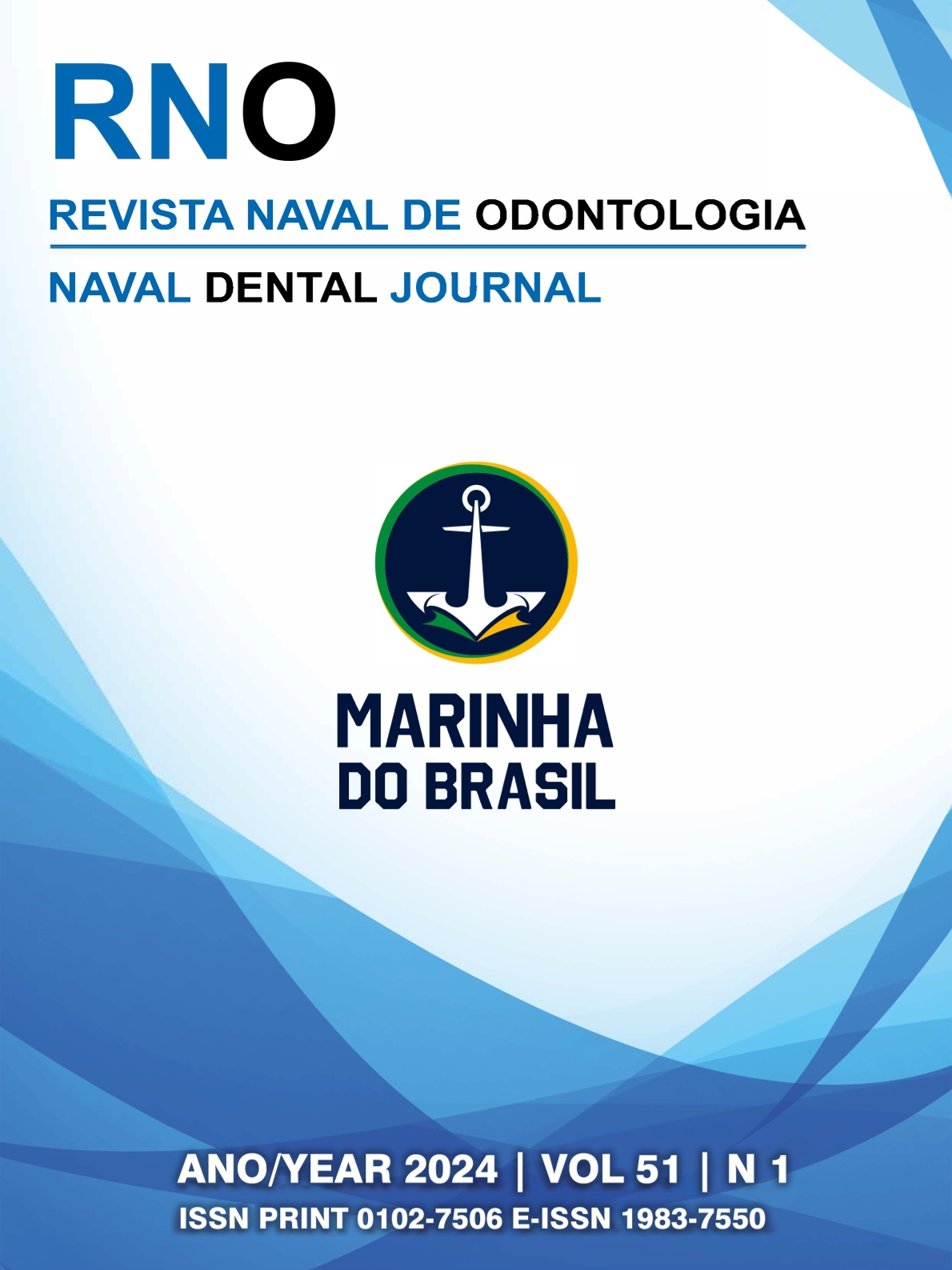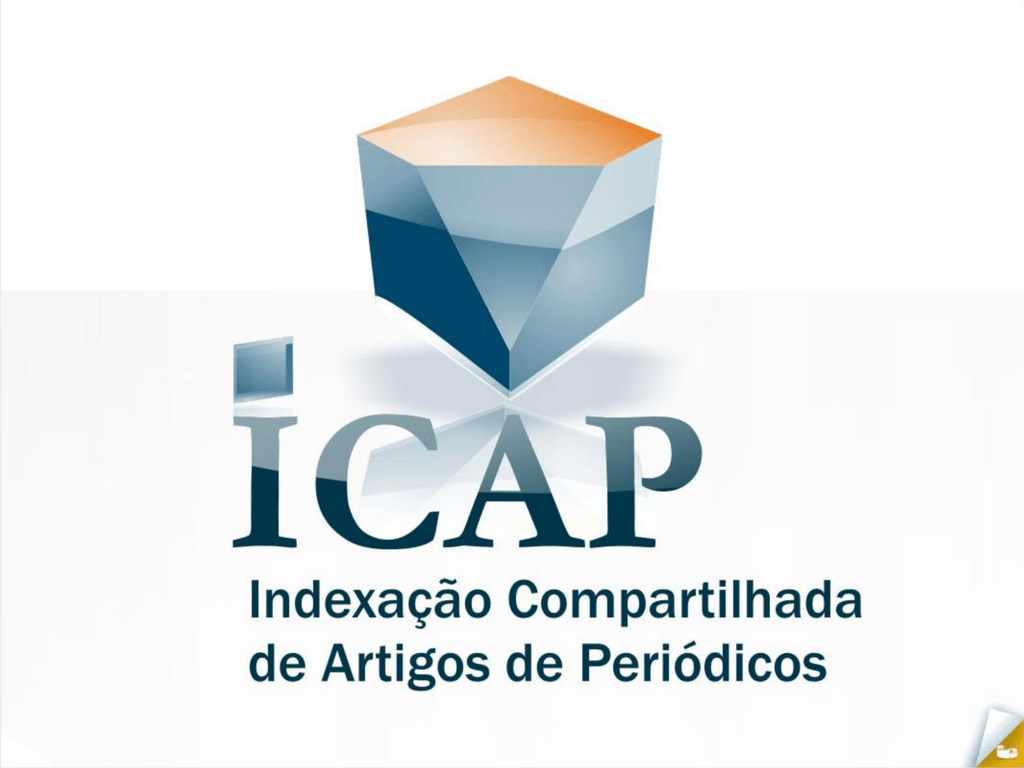BIOCORROSÃO DENTÁRIA: UMA REVISÃO DE LITERATURA
DOI:
https://doi.org/10.69909/1983-7550-biocorrosao-dentaria-uma-revisao-de-literaturaPalavras-chave:
Corrosão dentária; Erosão dentária; Desgaste dentário; Saúde bucal; Hábitos alimentares; Desmineralização.Resumo
A Biocorrosão é a desmineralização do dente causada pela exposição frequente a ácidos intrínsecos e/ou extrínsecos. O objetivo deste trabalho foi realizar uma revisão de literatura sobre prevalência, etiologia, diagnóstico, prevenção, tratamento e acompanhamento da biocorrosão. Realizou-se uma pesquisa avançada nas bases de dados PubMed, Biblioteca Virtual em Saúde (BVS) e Portal Periódicos CAPES com os descritores em ciências da saúde DeCS e MeSH. Foram incluídos artigos publicados em revistas científcas nos últimos 10 anos, em suas versões completas, em português, inglês e espanhol. Artigos duplicados, livros e teses foram excluídos.Ao final, 5.474 artigos foram encontrados e, após a leitura dos títulos e resumos, 40 artigos foram selecionados para a leitura completa.A biocorrosão dos tecidos dentários está cada vez mais comum na população em geral; atualmente, cerca de 29% dos adultos apresentam sinais da doença. Por isso, seu diagnóstico deve ser feito o mais precocemente possível, evitando danos graves à estrutura dentária. Para isso, os cirurgiões-dentistas devem estar atentos à exposição bucal a ácidos gástricos e a hábitos alimentares com consumo frequente de alimentos ou bebidas ácidas, os quais são os principais agentes etiológicos dessa condição, enquanto reconhecem os sinais clínicos associados. A prevenção é importante em todos os estágios, e o tratamento varia entre restaurações diretas, indiretas ou coroas totais. Além disso, a orientação do paciente e o acompanhamento dessa condição são fundamentais. Conclui-se que medidas preventivas são indispensáveis para evitar ou paralisar a progressão da doença e o tratamento deve priorizar abordagens minimamente invasivas, sendo crucial acompanhá-las para garantir um bom controle dessa condição.
Referências
2.Carvalho TS, Colon P, Ganss C, Huysmans MC, Lussi A, Schlueter N, et al. Consensus report of the European Federation of Conservative Dentistry: erosive tooth wear—diagnosis and management. Clin Oral Investig. 2015 Jul 1;19(7):1557–61.
3.Sá Caye LF, Cerutti Kopplin D, Frasca LC da F, Rivaldo EG, Keller Celeste R. Prevalence and severity of tooth wear and risk factors among young adults in Southern Brazil. Rev Fac de Odontol Porto Alegre. 2020 Aug 20;61(1):38–47.
4.Ainoosah SE, Levon J, Eckert GJ, Hara AT, Lippert F. Effect of silver diamine fluoride on the prevention of erosive tooth wear in vitro. J Dent. 2020 May;3:100015.
5.Bartlett D, O’Toole S. Tooth wear and aging. Aust Dent J. 2019 May 30;64(S1):S59–62.
6.Sppezapria MS, Miranda MESG, Aguiar TRSA. A etiologia da lesão cervical não cariosa: um novo desafio para o cirurgião-Dentista do século XXI. Rev Nav Odontol. 2021; 48(1): .41-49
7.Resende T, Reis K, Schlichting L, Magne P. Ultrathin CAD-CAM Ceramic Occlusal Veneers and Anterior Bilaminar Veneers for the Treatment of Moderate Dental Biocorrosion: A 1.5-Year Follow-Up. Oper Dent. 2018 Jul 1;43(4):337–46.
8.Uhlen MM, Tveit AB, Refsholt Stenhagen K, Mulic A. Self-induced vomiting and dental erosion – a clinical study. BMC Oral Health [Internet]. 2014 Jul 29;14(1).
9.Schlueter N, Amaechi Bennett T, Bartlett D, Buzalaf M, Carvalho T, Ganss C, et al. Terminology of Erosive Tooth Wear: Consensus Report of a Workshop Organized by the ORCA and the Cariology Research Group of the IADR. Caries Res [Internet]. 2019 Oct 14;1–5.
10.Butera A, Maiorani C, Gallo S, Pascadopoli M, Buono S, Scribante A. Dental Erosion Evaluation with Intact-Tooth Smartphone Application: Preliminary Clinical Results from September 2019 to March 2022. Sensors (Basel). 2022 Jul 8;22(14):5133.
11.O’Toole S, Marro F, Loomans BAC, Mehta SB. Monitoring of erosive tooth wear: what to use and when to use it. Br Dent J. 2023 Mar 24;234(6):463–7.
12.Canto FMT, Alexandria AK, Magno MB, Silva EM da, Maia LC. Topography and Microhardness Changes of Nanofilled Resin Composite Restorations Submitted to Different Finishing and Polishing Systems and Erosive Challenge. Pesqui Bras Odontopediatr Clín Integr. 2020;20.
13.Dundar A, Sengun A. Dental approach to erosive tooth wear in gastroesophageal reflux disease. Afr Health Sci. 2014 Jun 12;14(2):481.
14.Cruz JB, Bonini G, Lenzi TL, Imparato JCP, Raggio DP. Bonding stability of adhesive systems to eroded dentin. Braz Oral Res. 2015 Jul 7;29(1):1–6.
15.de Queiroz Gonçalves PHP, Guimarães LS, de Azeredo FNA, Wambier LM, Antunes LAA, Antunes LS. Dental erosion’ prevalence and its relation to isotonic drinks in athletes: a systematic review and meta-analysis. Sport Sci Health. 2020 Feb 22;16(2):207–16.
16.Nolasco SC, Rocha LC, Silva OS, Auad SM, Ferreira F, Assunção CM. Effects of different toothpaste formulations on erosive tooth wear prevention: systematic review. Braz Dent Sci. 2023 Jan 1;26(1):e3688–8.
17.Assunção CM, Lussi A, Rodrigues JA, Carvalho TS. Efficacy of toothpastes in the prevention of erosive tooth wear in permanent and deciduous teeth. Clin Oral Investig. 2018 May 2;23(1):273–84.
18.Maltarollo TH, Risemberg RICS, Pedron IG, Martins JL, Shitsuka C, Friggi MNP. Um guia rápido sobre o desgaste dentário erosivo. E-Acadêmica. 2022 May 22;3(2):e0732149.
19.Lourenço AR, Porto R, Lopes D, Moraes M, Rangel L, Azevedo MMF de, et al. Erosive potential associated with the pH of industrialized and natural drinks. Rev Flum Odontol (Online) [Internet]. 2022 [cited 2023 Nov 28];107–16.
20.Souza PG, Machado AC, Pereira AG, Teixeira RR, Espíndola FS, Soares PV. The dentin chemical degradation and saliva roles on Noncarious Cervical Lesions – literature review. Rev Odontol Cienc. 2018 Jul 25;32(4):199.
21.Zimmer S, Kirchner G, Bizhang M, Benedix M. Influence of Various Acidic Beverages on Tooth Erosion. Evaluation by a New Method. Coles JA, editor. PLoS One [Internet]. 2015 Jun 2;10(6):e0129462.
22.Lussi A, Megert B, Shellis RP. The erosive effect of various drinks, foods, stimulants, medications and mouthwashes on human tooth enamel. Swiss Dent J [Internet]. 2023 Jul 10 [cited 2023 Nov 28];133(7-8):440–55.
23.Hartz JJ, Procopio A, Attin T, Wegehaupt FJ. Erosive Potential of Bottled Salad Dressings. Oral Health Prev Dent. 2021 Jan 1;19(1):51–7.
24.Chen WL, Chen YY, Wu WT, Lai CH, Sun YS, Wang CC. Examining relationship between occupational acid exposure and oral health in workplace. BMC Public Health. 2020 Sep 7;20(1).
25.George R, Chell A, Chen B, Undery R, Ahmed H. Dental Erosion and Dentinal Sensitivity amongst Professional Wine Tasters in South East Queensland, Australia. Sci World J. 2014;2014:1–5.
26.Ferraz LN, Pini NIP, Ambrosano GMB, Aguiar FHB, Lima DANL. Influence of cigarette smoke combined with different toothpastes on enamel erosion. Braz Oral Res. 2019;33.
27.Baumann T, Kozik J, Lussi A, Carvalho TS. Erosion protection conferred by whole human saliva, dialysed saliva, and artificial saliva. Sci Rep. 2016 Oct 5;6(1).
28.Stefański T, Postek-Stefańska L. Possible ways of reducing dental erosive potential of acidic beverages. Aust Dent J. 2014 Aug 22;59(3):280–8.
29.Aránguiz V, Lara JS, Marró ML, O’Toole S, Ramírez V, Bartlett D. Recommendations and guidelines for dentists using the basic erosive wear examination index (BEWE). Br Dent J. 2020 Feb;228(3):153–7.
30.Schmidt J, Huang B. Awareness and knowledge of dental erosion and its association with beverage consumption: a multidisciplinary survey. BMC Oral Health. 2022 Feb 11;22(1).
31.Agulhari MAS, Giacomini M, Rios D, Bombonatti J, Wang L. Giomer technology for preventive and restorative clinical management of erosive tooth wear: a case report. Braz Dent Sci. 2022;25(2):e3162.
32.Schlichting LH, Resende TH, Reis KR, Magne P. Simplified treatment of severe dental erosion with ultrathin CAD-CAM composite occlusal veneers and anterior bilaminar veneers. J Prosthet Dent [Internet]. 2016 Oct [cited 2019 May 8];116(4):474–82.
33.Morimoto S, Sesma N, Agra CM, Guedes-Pinto AC, Hojo KY. Erosão Dental: etiologia, mecanismos e implicações. J Biodent Biomater [Internet]. 2017 Oct 20 [cited 2023 Nov 29];4(1).
34.Sato T, Fukuzawa Y, Kawakami S, Suzuki M, Tanaka Y, Terayama H, et al. The Onset of Dental Erosion Caused by Food and Drinks and the Preventive Effect of Alkaline Ionized Water. Nutrients. 2021 Sep 28;13(10):3440.
35.Sherin Jose Chockattu, Deepak BS, Sood A, Niranjan NT, Arun Jayasheel, Goud M. Management of dental erosion induced by gastro-esophageal reflux disorder with direct composite veneering aided by a flexible splint matrix. Restor Dent Endod. 2018 Jan 1;43(1).
36.Mortensen D, Mulic A, Pallesen U, Twetman S. Awareness, knowledge and treatment decisions for erosive tooth wear: A case‐based questionnaire among Danish dentists. Clin Exp Dent Res. 2020 Oct 30;7(1):56–62.
37.Grandon F, Marcus N, Muster M. Esthetic rehabilitation with ultra-thin ceramic veneers and direct mock-up in the treatment of dental erosion – case report. J Oral Res. 2018 Aug 1;7(6):194–9.
38.Schlichting LH, Resende TH, Reis KR, Raybolt dos Santos A, Correa IC, Magne P. Ultrathin CAD-CAM glass ceramic and composite resin occlusal veneers for the treatment of severe dental erosion: An up to 3-year randomized clinical trial. J Prosthet Dent. 2022 Jun;
39.Sosa AC, Solis JM, Cruz-Fierro N, López S, Nakagoshi S. Dental Erosion: Causes, diagnostics and treatment. J Oral Res. 2014 Sep 24;3(4):257–61.
Khwaja Z, Millar BJ. An Analysis of Electronic Primary Dental Practice Tooth Wear Referrals. Prim Dent J. 2021 Mar;10(1):56–62.













